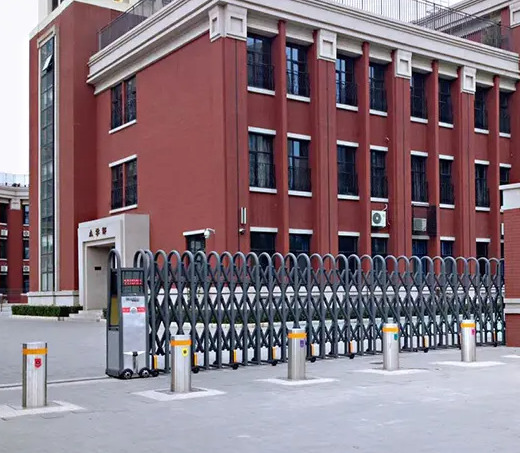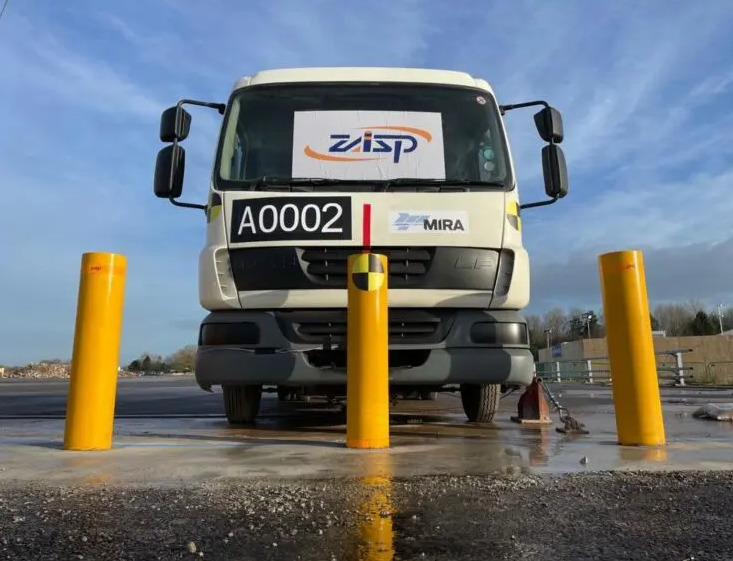Choosing between fixed and removable bollards depends on your specific needs and the intended application. Bollards serve various purposes, including traffic control, property protection, and pedestrian safety. Here’s a comprehensive comparison to help you decide which type is best for your situation:
1. Fixed Bollards
Fixed bollards are permanent installations embedded into the ground. They provide robust and reliable protection and are commonly used in areas where security and durability are paramount.
Advantages:
– **High Security:** Fixed bollards offer excellent protection against vehicle collisions. They are ideal for high-security areas such as government buildings, military bases, and sensitive infrastructure.
– **Durability:** Made from strong materials like steel or concrete, fixed bollards are highly durable and can withstand significant impact without damage.
– **Low Maintenance:** Once installed, fixed bollards require minimal maintenance, making them a cost-effective long-term solution.
– **Permanent Barrier:** These bollards provide a constant physical barrier, ensuring areas remain secure at all times.
Disadvantages:
– **Lack of Flexibility:** Fixed bollards cannot be moved or adjusted, which might be limiting in dynamic environments where access needs change.
– **Higher Installation Costs:** Installing fixed bollards typically requires more labor and time, as they need to be securely embedded into the ground.
– **Visual Impact:** Permanent bollards can affect the aesthetic of an area, especially in places where frequent changes in layout are desired.
2. Removable Bollards
Removable bollards can be temporarily taken out and reinstalled as needed. They offer flexibility and adaptability, making them suitable for areas with changing access requirements.
Advantages:
– **Flexibility:** Removable bollards can be easily installed or removed, allowing for dynamic access control. This is ideal for locations where vehicle access is needed occasionally, such as during events or emergencies.
– **Easy Installation:** These bollards typically require less complex installation compared to fixed bollards. Many removable bollards use locking mechanisms that secure them in place without the need for deep foundations.
– **Adaptability:** They can be adapted to different situations and moved as needed, providing temporary barriers that can be repositioned.
– **Aesthetic Options:** Removable bollards can be designed to blend with the environment and can be removed when not in use, preserving the area’s visual appeal.
Disadvantages:
– **Lower Security:** Removable bollards generally offer less impact resistance than fixed bollards, making them less suitable for high-security applications.
– **Maintenance Requirements:** The mechanisms that allow for removal and reinstallation can wear out over time, requiring regular maintenance to ensure they function properly.
– **Potential for Misuse:** Since they can be removed, there’s a risk that unauthorized individuals could tamper with them if not properly secured.
Questions and Answers
Q: What are the primary applications for fixed bollards?
A: Fixed bollards are commonly used in high-security areas, around critical infrastructure, and in locations where permanent vehicle barriers are required. They are also suitable for pedestrian areas, preventing vehicle access while allowing foot traffic.
Q: Where are removable bollards most beneficial?
A: Removable bollards are ideal for locations that require flexible access control, such as event venues, pedestrian zones that occasionally allow vehicles, and emergency access routes. They are also useful in residential areas where access needs may change.
Q: How can I ensure removable bollards are secure?
A: To ensure security, choose removable bollards with robust locking mechanisms and use proper installation techniques. Regular maintenance and inspections can help ensure they remain secure and functional.
Q: Can removable bollards provide adequate security in high-traffic areas?
A: While removable bollards can provide some level of security, they are generally not as robust as fixed bollards. For high-traffic areas requiring significant impact resistance, fixed bollards are typically a better choice.
Q: Are there hybrid options that offer both security and flexibility?
A: Yes, some bollard systems offer hybrid solutions, combining the robustness of fixed bollards with the flexibility of removable ones. These systems can provide permanent barriers that can be temporarily removed or adjusted as needed.
Conclusion
When choosing between fixed and removable bollards, consider the specific needs of your application. Fixed bollards provide high security, durability, and low maintenance, making them suitable for permanent installations and high-security areas. On the other hand, removable bollards offer flexibility, easier installation, and adaptability, making them ideal for locations with changing access requirements. By assessing your security needs, budget, and the intended environment, you can select the bollard type that best meets your requirements, ensuring both safety and functionality in your space.



